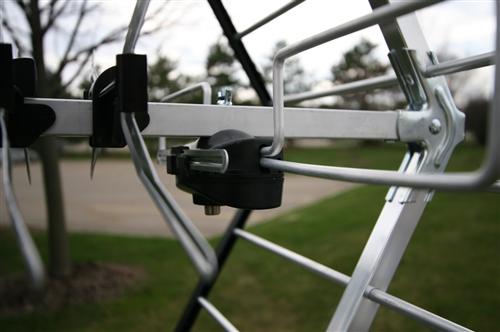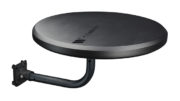Yagi. OK, it’s a silly sounding name. Maybe it conjures up images of the original Karate Kid or a certain picnic-basket-stealing bear. The yagi antenna, however, is one of the most important advances in outdoor antenna technology and when you disrespect the name, you disrespect one of the people who made that breakthrough.
How did the “yagi” get its name?
The yagi antenna is properly called a “Yagi-Uda” antenna after Shintaro Uda and Hidetsugu Yagi. They cooperated to invent the antenna in 1926 in Tokyo. Dr. Uda actually seems to have done more work than Dr. Yagi actually although history remembers Dr. Yagi for whatever reason. The two men cooperated to create a set of formulas that would let you place multiple dipole antennas in front of each other with minimal interference between. The result is the well-known antenna design you’ve seen on roofs your whole life.

Yagi antennas combine several different parts. The most important is the “receiving element.” This can be hard to find on an antenna but generally it’s close to where the cable connects. Yagi antennas also have “reflectors” and “directors” which are other elements designed to concentrate the signal on a specific part of the antenna. In the image below, the bars that stick out from the top and bottom of the antenna are reflectors that send more signal to the directors in front of them, which in turn bounce them into a central receiving element. The reflectors are very carefully placed so that UHF signals bounce back and VHF signals continue through to the array behind them.
What’s the difference between a “yagi” and a “log periodic” antenna?

In general, we tend to call antennas that look like the one above “yagis.” That’s not completely wrong. Technically most of these antennas are “hybrid yagi-log-periodic” antennas.
In the antenna above, smaller dipole antennas sit in front of ever larger ones. (The image above shows the antenna from the back.) Each dipole antenna picks up a specific frequency range. The distance between the dipoles is designed specifically to eliminate interference and let every dipole do its job well. For the most part, the dipoles are placed right behind each other. They stick out horizontally, to better align with the radio transmissions most commonly used in the US.
Those elements that run small to large make up the “log periodic” part of the antenna. The part on the left, with equal sized elements focusing all the signal on one part make it up the “yagi” part. If you’re interested, here’s a whole tutorial on the subject.
Most people will call any antenna with bare metal, a horizontal design, and a lot of metal bits a “yagi.” That’s perfectly ok with us.
Down the rabbit hole
If you happen to have the time and inclination, you can go down the rabbit hole. A couple of internet searches will help you find far, far more than you will ever want to know about the physics involved in creating a yagi antenna. You’ll also learn how they can be best optimized for different frequency ranges. It’s great bedtime reading. Here’s the need to know one thing more than anything. Yagi antennas like the one you see above really work best for lower frequencies like FM and VHF. They also work for cellular which has small, fixed frequency ranges.
UHF television and satellite antennas tend not to use yagi antennas. They tend to be unnecessary for UHF unless there is a need for really really long range reception. Those antennas tend to work just as well with a single dipole. That’s why UHF antennas can be so much more compact than VHF ones. For satellite, a single, dish-shaped reflector works to focus the signal.
If you’re interested in getting the perfect antenna for you, whether or not it’s a yagi, check out the great selection at Solid Signal.





